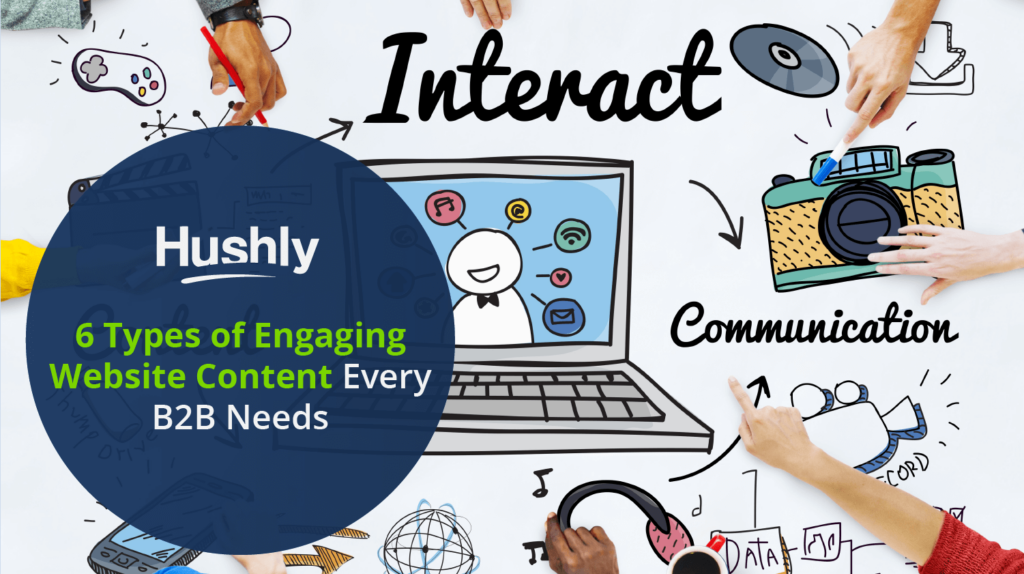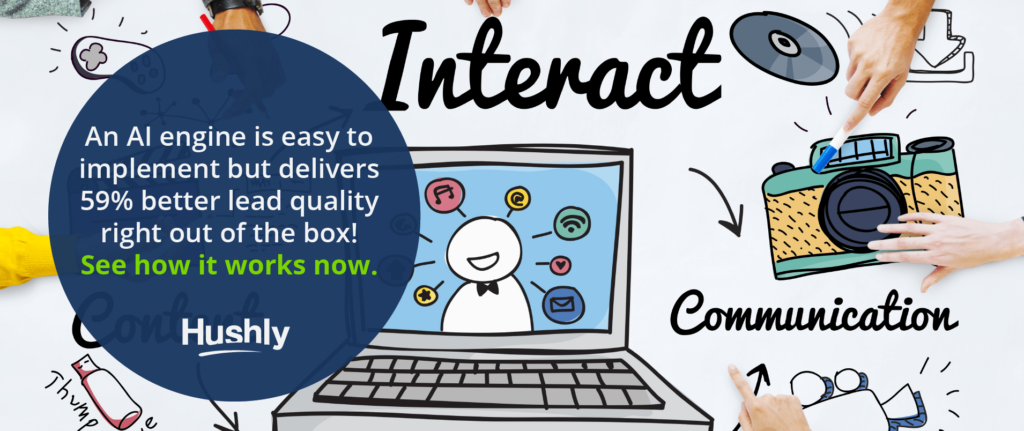PPC ads and sponsored social media posts are useful, but the costs add up quickly.
Engaging website content, on the other hand, offers a sustainable and effective long-term strategy.
Not sure if your content is engaging enough? Look at your metrics:
- Are website visitors bouncing after only consuming one piece of content?
- Are your lead magnet download figures dismal?
- Is your email list lonely?
- Are prospects converting into leads but vanishing into the night?
If any of those scenarios sound familiar, you might want to rethink your content.
Engaging content requires a well-researched strategy and a few important tools.

Why is Engaging Website Content So Important?
Your audience has thousands of websites and brands competing for their attention. When someone arrives at your website, that means they trusted your headline or social media post enough to click on it. Show them why you deserve their time, energy, and attention.
Our time is precious. For B2B buyers, it’s costly.
Engaging content builds trust because it shows that you care about each visitor’s experience – even before they become a lead or customer.
You also need engaging content to nurture leads. Leads only spend 17% of the buyer’s journey talking to all potential vendors. Your website content fills the gap, demonstrating your authority, promoting your services, and solving their pain points.
Your website is your #1 marketing tool. Treat it that way! Engaging content helps you squeeze the maximum value from your website.
6 Types of Engaging Website Content Your B2B Needs to Win Over Leads and Customers
Strive for a well-rounded content experience. Put yourself in your target audience’s mind and ask yourself what YOU’D want from your website content.
1. Figure Out How to Make Your Website More Interactive
Interactive content encourages action – and more and more action.
B2B professionals agree: 58% say they’re likely to binge interactive content for 20 minutes! Did you ever think visitors could possibly spend 20 minutes browsing your website?
Interactive content comes in several shapes and forms, including:
- Polls and surveys
- 360 photos
- Quizzes
You can also turn your existing written content – like blogs, case studies, and eBooks – into an interactive experience. An adaptive content hub, for example, uses AI, machine learning, and an interactive design to create a unique content experience.
2. Account-Based Content
Content isn’t worth what you spend on it if it’s not relevant, useful, and high-quality.
Even if you don’t have a full-blown account-based marketing strategy, account-based content can boost engagement and leads simply because it’s more relevant.
Start by creating content for current accounts such as your best customers. Account-specific content will keep those organizations engaged with your brand and prevent churn. You can even promote this content to people at the organization on social media.
Plus, other organizations in their industry will see it and likely relate to it as well because they face the same issues and pain points. As a bonus, organizations might see this account-specific content and feel compelled to sign up for your service because their competitors use it.
Once you cover your current accounts’ content, expand your efforts to other accounts in the same vertical or similar ones.
3. Engaging Website Content for Specific Job Roles
Once you cover some account-based content, dig deeper into micro firmographics to better understand your audience.
Specifically, content for distinct job roles.
Remember, between six and ten people at a single company are involved in various buying decisions. Depending on the company culture and structure, this could include everyone from C-level down to end-users.
It’s best to research your individual accounts to grasp their buying processes, but creating a wide range of engaging website content for different roles will do just fine.
The point is to show every visitor that you care about their unique experience.
4. Multimedia Content
Everyone learns in different ways. Some are visual learners, while others prefer listening.
A nice variety of multimedia content is a must for your website:
- Introduction and tutorial videos
- Explainer infographics
- Informational GIFs explaining complex subjects
- Industry podcasts and interviews
Multimedia is naturally engaging and often interactive. Plus, it demonstrates your authority in your field and shows that you care about creating digestible content.
5. Content for Specific Issues and Pain Points
Engaging website content is highly relevant. It doesn’t get more relevant than addressing specific issues and pain points your unique buyers face.
In fact, 68% of buyers say they’d like to see your content organized by pain point or issue. You can’t organize pain point-based content if it doesn’t exist. Use data, research, and conversations to figure out how to create that content.
Use a few strategies to get at the bottom of their daily lives:
- Reading what they share on social media and their commentary
- Finding common disputes or controversial practices in their industry
- Following industry-relevant subreddits and Twitter hashtags
- Consuming the same media outlets they consume
- Following their favorite influencers
- Keeping tabs on your competitors’ content to stand out
6. Hyper-Personalized Content
Finally, your audience needs engaging website content delivered in a welcoming format. There is a reason apps like Netflix and Spotify are so addicting: They offer data-driven personalized suggestions.
Think content recommendation engines are too consumer for your audience? Think again.
67% of business buyers say they’ve switched to vendors that provide a more consumer-like experience.
An AI engine studies your visitors’ behavior and uses intent data to recommend the best piece of content for their stage of the funnel and needs at any given time. AI offers the engaging website features your buyers expect – like an Amazon-style experience.
How to Make a Website More Interactive with AI
Artificial intelligence is the backbone of all engaging website content. Smart B2B brands already use AI to create a hyper-personalized content experience for every visitor.
Don’t put the burden on visitors to dig up the content they need from your website. Use behavioral data and machine learning to put it in front of their face instantly.
An AI engine is easy to implement but delivers 59% better lead quality right out of the box! See how it works now.

